By Rick VanSickle
It’s the sky, that big, beautiful, luminous sky on the western horizon that defines the mysterious Grimsby Hillside Vineyard on the outer fringes of Niagara.
It is no doubt a beautiful vista nestled below the precipice of the Niagara Escarpment, its red clay soils shimmering in the bright sunlight of summer. We are walking the grounds, heat pounding the parched vineyard, yet there is life here, new growth, old-vine growth, renewed growth, and history, a deep and fascinating history. I am walking with Paul Franciosa, who along with his brother Frank are now the custodians of this magical place, where many have walked before, farming fruit, grapes — or both — for 150 years. But never has this hidden gem of a vineyard attracted so much attention as it is right now. Grimsby Hillside will no doubt take its place among the great “grand cru” vineyards of Niagara.
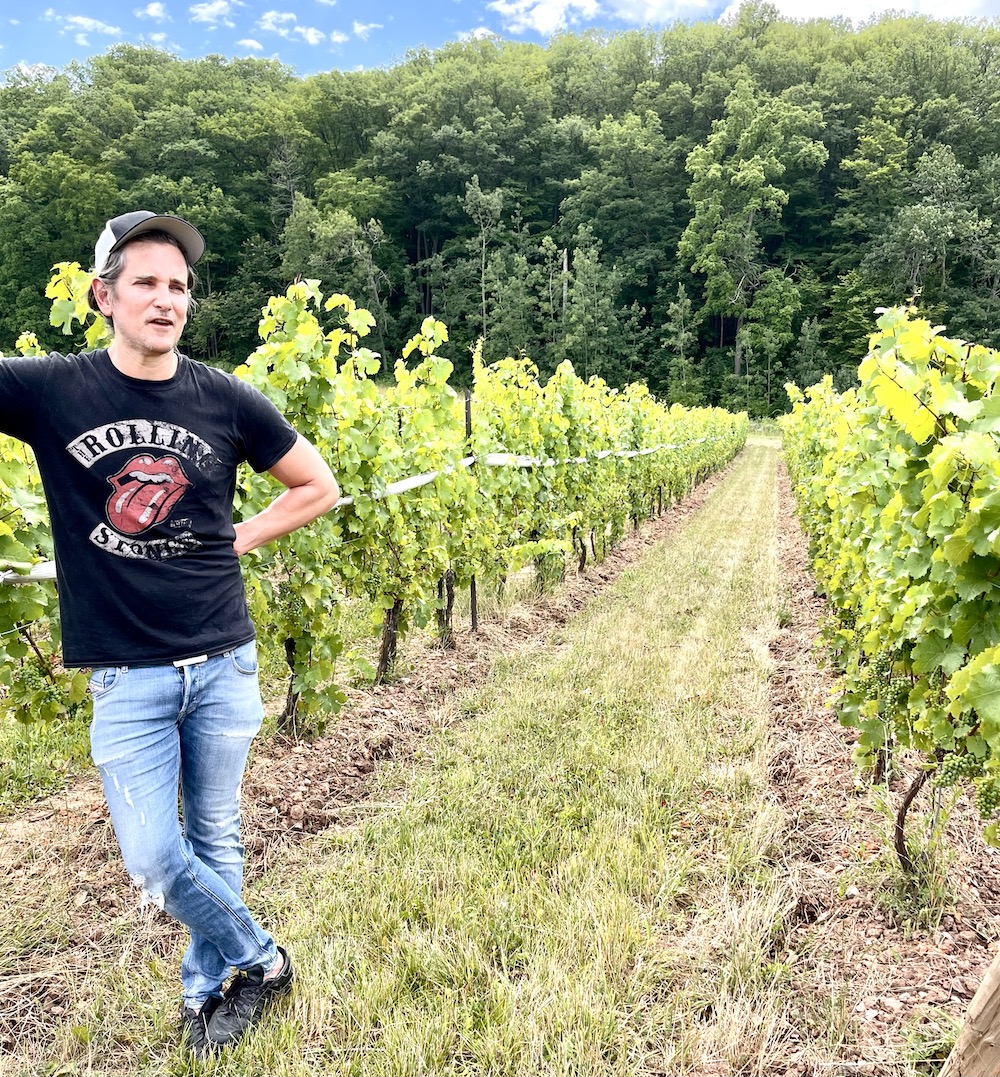
The story of Grimsby Hillside is steeped in history, but also sadness, sacrifice and a family’s desire to honour the legacy of their patriarch, Lou Franciosa, who dared to dream, dared to follow his path as a would-be grape grower, amateur winemaker, and lover of wine in retirement. His intent was to build something special that would carry on for generations.
The first grapes on this farm were planted 150 years ago by the Cline family, who grew Delaware and Concord grapes, among other crops. The Clines farmed the land for several generations, and through numerous owners up until the days of Parkdale Wines. The vineyard had been at various times called The Cline Farm, the Pinehurst Fruit Farm, and at one point The Parkdale Wines Limited Experimental Vineyards — a research station where the first vinifera varieties were trialed in the region. The success of these trials prompted John Lenko and his son William to plant their famous Chardonnay vineyard in 1959, some of the first Chardonnay planted in Niagara, and gave way to the Daniel Lenko Estate Winery, on the Beamsville Bench, started by Daniel Lenko, William’s son.
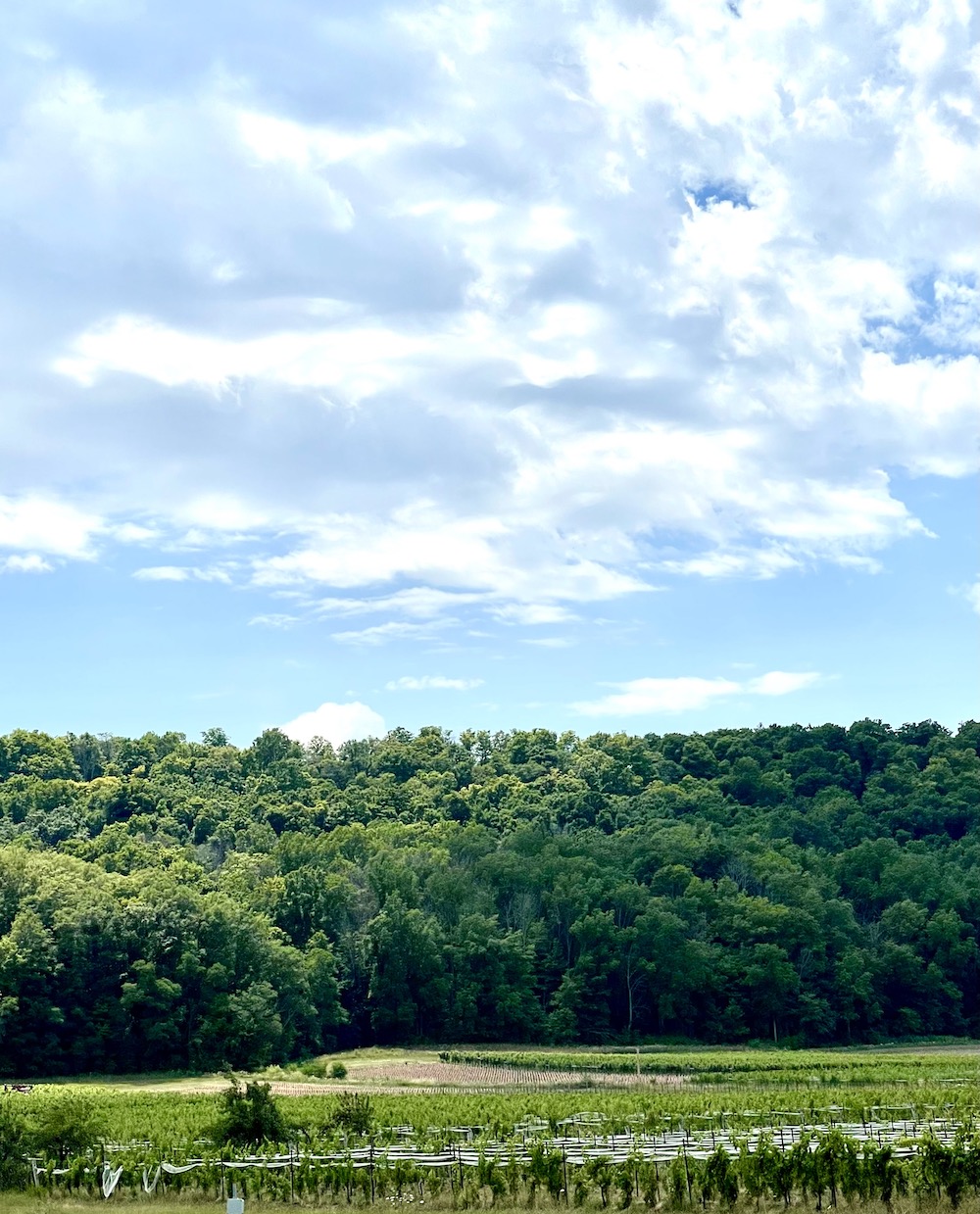
But nothing in the rich history of the Grimsby Hillside Vineyard has gathered more attention than what it is getting now. The 185-acre property was purchased by Lou Franciosa in 2002. He was a partner in the Willow Heights Estate Winery, located in Vineland and purchased in 1998 under the winemaking direction of Ron Speranzini. Willow Heights was eventually sold to Creekside Estate Winery owner Laura McCain, who ended up selling Gretzky to Peller Estates. GreenLane Estate Winery now owns the former Willow Heights property and winery after Gretzky skated on over to Niagara-on-the-Lake under the Peller banner.
Lou Franciosa was already a keen amateur winemaker and had his eyes on the Grimsby Hillside Vineyard as a “retirement” project. Sadly, Franciosa died of pancreatic cancer in 2006 at age 59, only four years after it was purchased and much of the planting already underway.
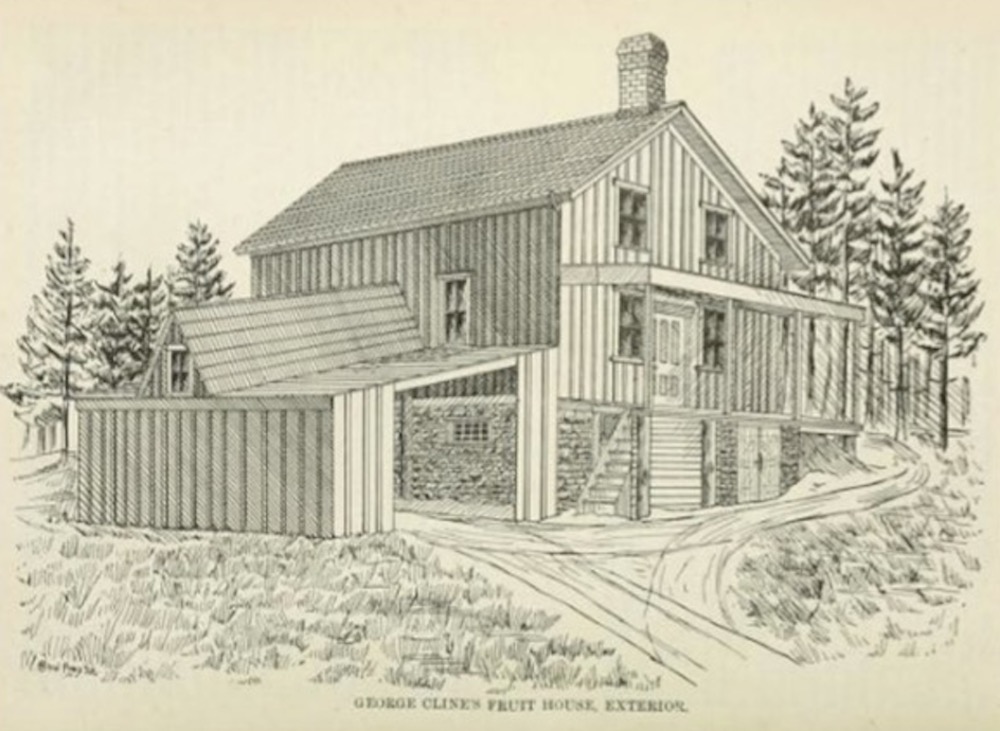
His two sons — Paul and Frank — were enjoying their own law and finance careers at the time and had little or nothing to do with grapes or wine but made the decision to continue their father’s legacy with the farm.
“We knew we had a nice property here,” said Paul, as we walked the 90 acres of planted vineyards. His father had laid the groundwork for high quality vinifera vines, sensing an opportunity to move the historic vineyard from high-yield, low maintenance hybrids with a bit of Riesling and Vidal to more traditional, low yielding and classic grapes like Chardonnay, Cabernet Franc, Cabernet Sauvignon, Pinot Noir, Pinot Gris, Gewurztraminer, Viognier, and more Riesling.
With the change in direction came a new name of the vineyard from the first iteration of Il Vigneto to Grimsby Hillside.
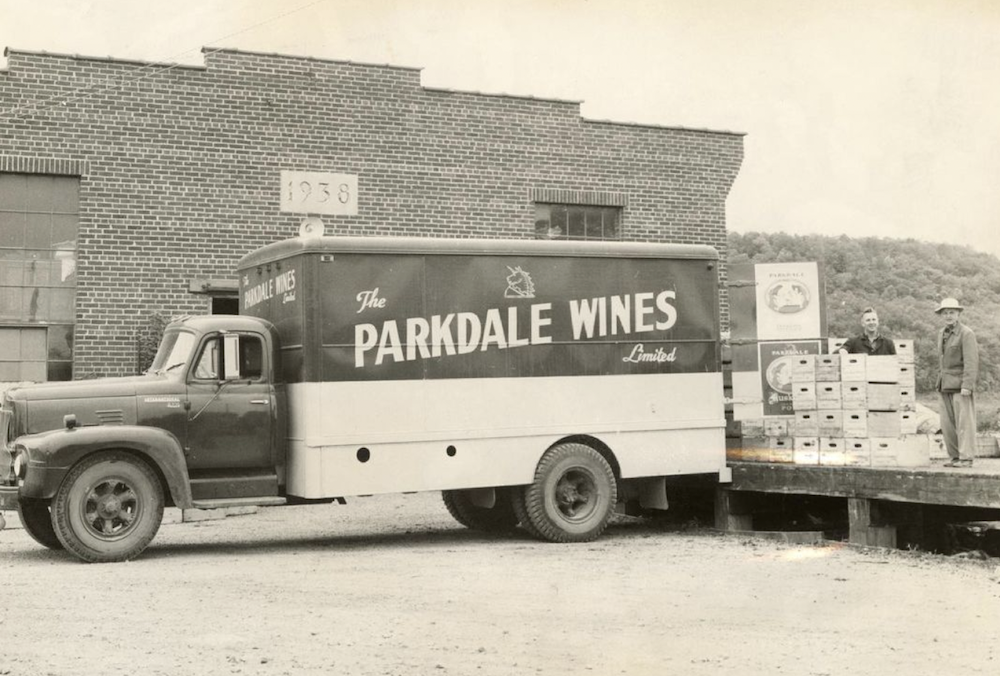
Why the change? Paul explained it in an Instagram post this way. “Well, beyond the fact that many customers couldn’t spell or pronounce Il Vigneto, we wanted a name that honoured the site’s past, and created a distinctive identity for its future. It was a long process, with lots of bad ideas, and a few good ones; and so now, after over a year of deliberations, our customers have finally been able print their labels for their new releases of 2019 single vineyard wines and get those wines into your glasses and cellars.”
Paul and his brother Frank wanted to shine a spotlight on the history of grape growing and winemaking in Grimsby. There were several pioneering growers in this area through history, such as W.W. Kitchen, who, together with J.R. Petit, started one of the first wineries in Canada in 1864 using grapes from their respective Grimsby vineyards. “And while much attention in grape growing in Niagara has moved to Niagara-on-the-Lake and the various areas along the Bench, we felt like it was time to celebrate this small area of western Niagara. Including Grimsby in the name seemed like a natural, and important idea,” Paul said.
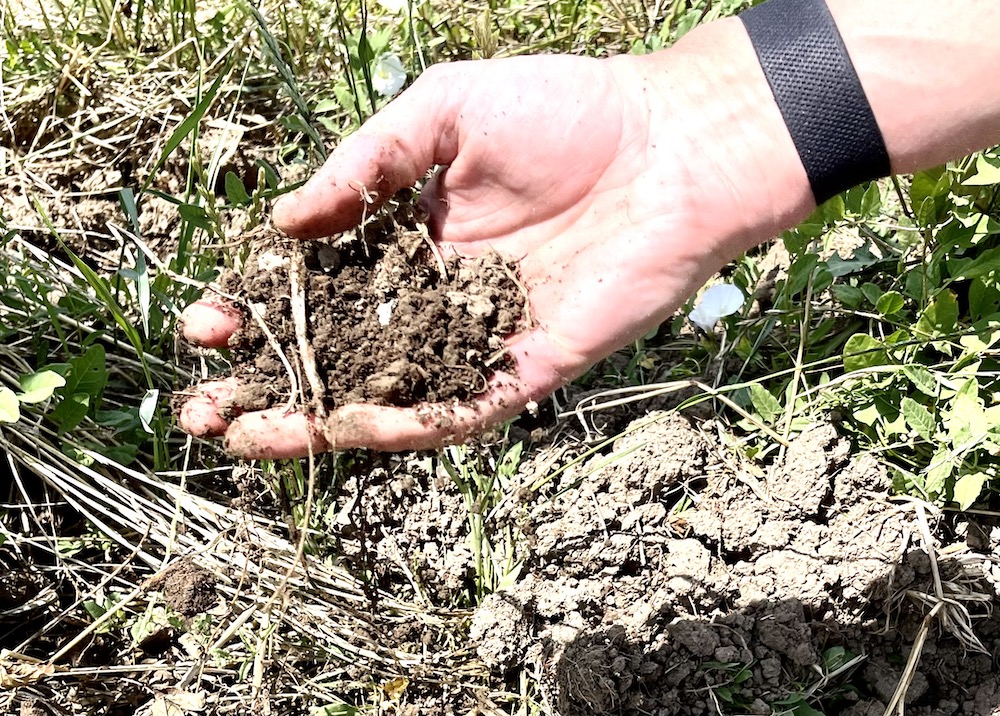
“The location of the vineyard, nestled under the Niagara Escarpment, not only defines the site visually, but also contributes to the unique microclimate of the site and the character of the wines uncovered by passionate winemakers to extract and showcase the unique personality of the grapes we grow,” he said. “The Escarpment funnels breezes from the west that allow the grapes to ripen slowly, developing character and complexity. Its dense vegetation promotes cooler temperatures for the blocks along its base, helping the grapes preserve acidity, fostering vibrant, racy wines. It provides a source of mineral-infused groundwater that ensures the vines rarely face drought stress and enhance the character of wines made from the grapes. Its biodiversity adds numerous species of birds and insects that keep our little ecosystem in a state of balance and allow us to farm without needing to rely on chemical insecticides. The diverse soils of the old Lake Iroquois lakebed, and the varying proximity from the Escarpment of the blocks of the vineyard create a variety of distinct terroirs on our site that winemakers are working hard to explore and define.”
Paul adds that his family does not want the vineyard to be defined “by any one person or single family, as we recognize that where the site is today and where it will be in the future is a reflection of nearly 200 years of sweat and toil, and of passion and vision. Our job as stewards is to treat the land with respect, to honour it and its history, and do our best to continue to shape and refine the vision for the site as we continue to understand it better with each new budbreak and harvest.”
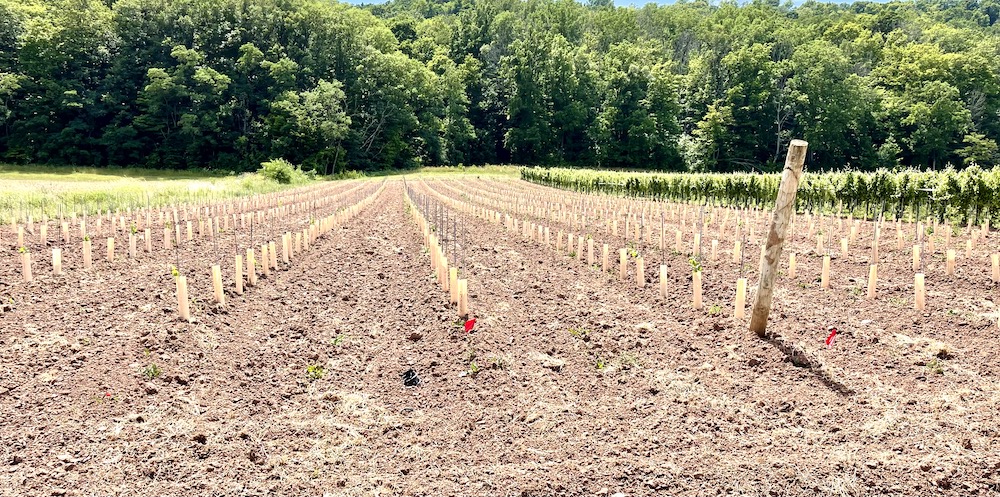
Much of the credit for the evolution of the vineyard and quality of the grapes goes to vineyard manager Josh Mitchell, said Paul. “Despite perhaps having a unique and compelling site, the recent transformation of our vineyard really wouldn’t have been possible without his involvement. He started with us in 2019, and for each of the past three years, all of our customers have commented on how the condition of the vineyard has been quite immaculate.”
The site has quickly grabbed the full attention of some of Ontario’s top winemakers, including Ilya Senchuk (Leaning Post), Thomas Bachelder (Bachelder wines), Kevin Panagapka (2027 Cellars), Kelly Mason (Mason Vineyard), Mackenzie Brisbois (Trail Estate), Rosewood, Fogolar, Divergence, Pearl Morissette … and the list goes on.
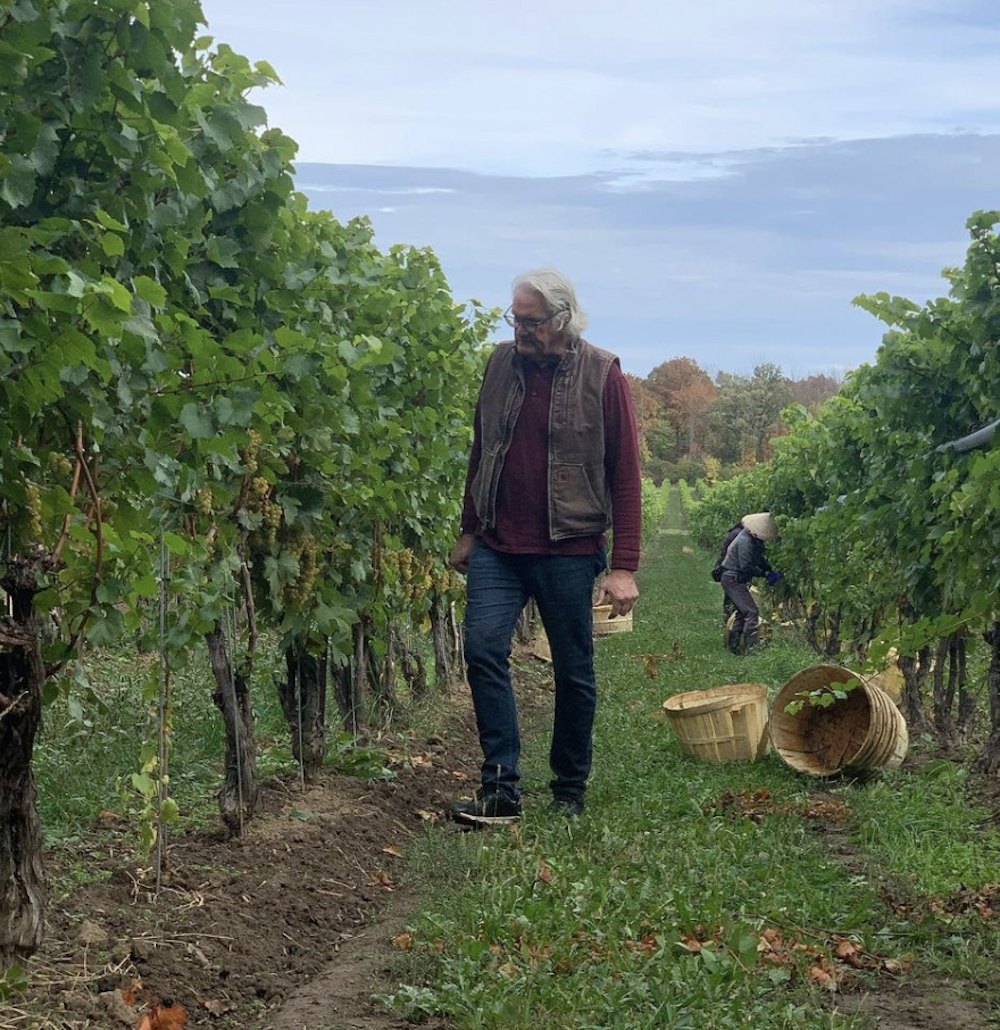
One of the early adopters of the Grimsby Hillside Vineyard was Bachelder, (above) who calls it a “big sky site,” due to the late sunsets over the vineyard to the west. He describes it like this:
“The Grimsby Hillside Vineyard is one of the sites where vines were first planted in Niagara, with the first harvest of grapes here in 1874. It was previously the vineyard of early Niagara wine pioneers Grimsby Wines Limited and Parkdale Wines and is being rediscovered as a unique terroir in its own right. Adding to the site’s colourful history, the Grimsby Hillside Stardust Vineyard very likely has many fragments of a 4.6-billion-year-old meteorite that hit the vineyard on the night of September 25, 2009, so there are some components in the soil that are a lot older than most vineyards in Niagara. The topsoils vary from silty clay/loam mixes to grey and red clays, over top of heavy red clay subsoils, with another layer that appears to contain calcareous limestone shale and gravel deposits (suspected to be eroded material from the escarpment face that settled on the site). The Frontier Block was only under-drained every second row because of the amount of boulders that were found under the ground (the rest of the vineyard is under-drained in every single row), which made draining every row a cost-prohibitive exercise. All the limestone and granite boulders that were dug up during drainage installation in 2007 are all still there along the edge of the escarpment. There’s certainly many more tons of loose rock left under the Frontier Chardonnay block, snuggled up as it is against the escarpment.”
The entire vineyard, which is transitioning to organic, itself is a complex array of aspect, clones, new plantings, trellising systems, and soil compositions, which start with red clay in the east with more sandy loam on top of burgundy red clay as you move west. It’s a fascinating and complex mosaic of terroir.
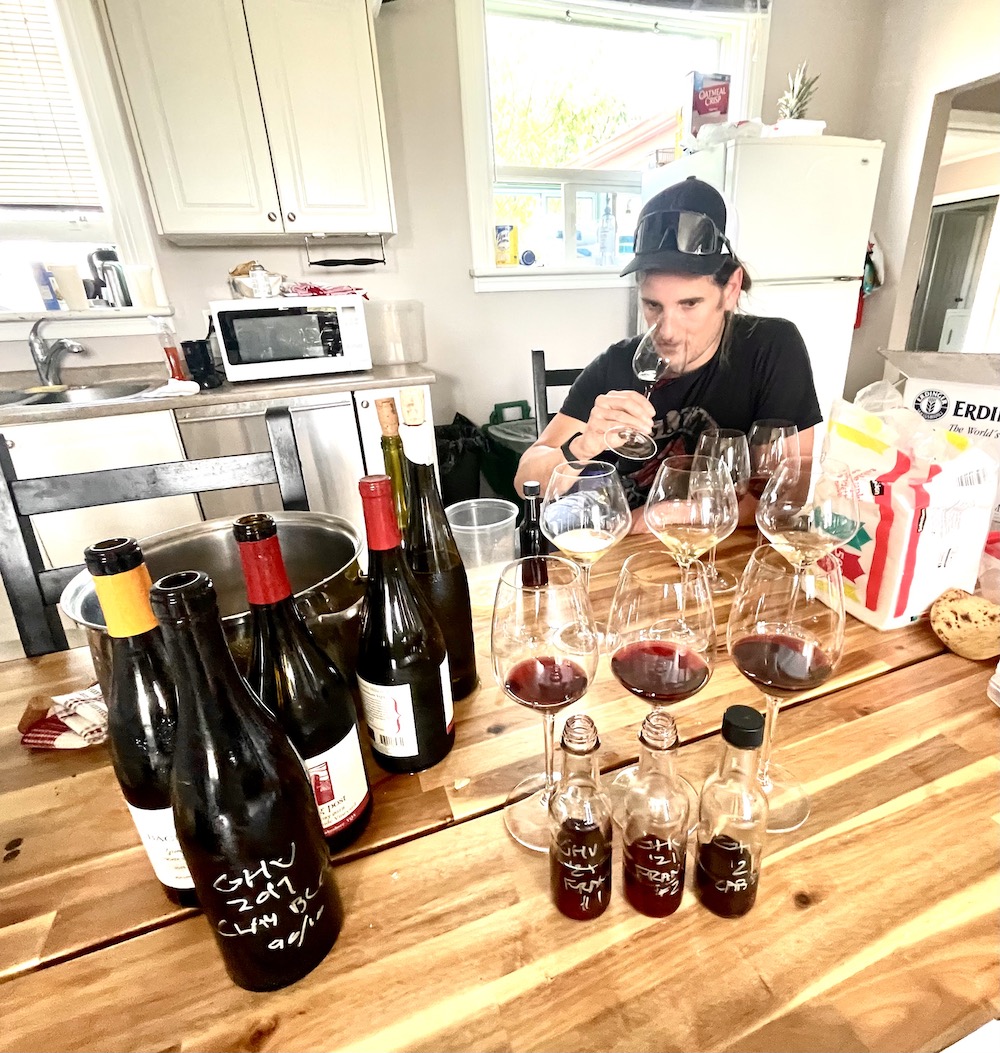
Several new plantings and replantings, due to the severe weather last winter that impacted many vineyards in Niagara, are underway and several experiments with things such clonal field blends and varied spacing between the rows of vines.
Terroir-obsessed winemakers such as Bachelder, Mason and Panagapka are starting to dig a bit deeper into the specific blocks of the vineyard. Bachelder and Mason both produced Chardonnays from the Frontier Block in a collaborative effort after meeting by chance in the Grimsby Hillside vineyard some time ago. They both realized they were sourcing fruit from the same block and the thought of a collaboration popped to mind.
According to Mason, they “tasted and tested, talked and tasted, and that seed of an idea came together in a duet, not just of two winemakers, but of two wines from different parts of the same Grimsby Hillside Vineyard, in an unjustly-unknown part of Niagara.”
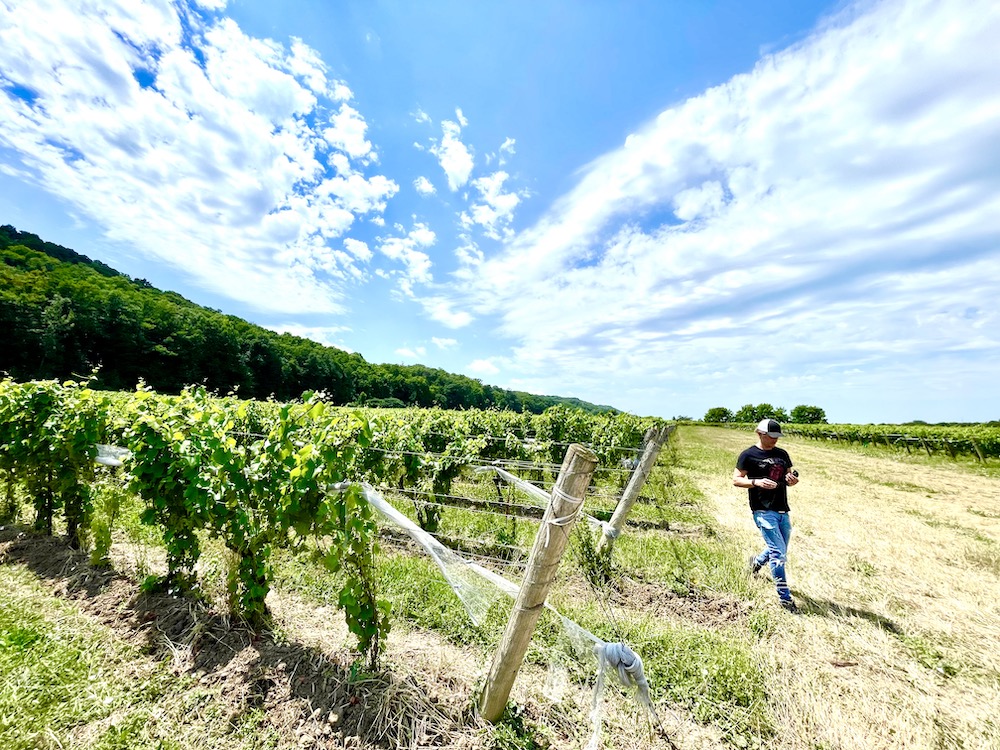
Panagapka calls it a “grand cru” site for Chardonnay. “Ironically, it’s a very old vineyard that just got overlooked for a while. Creekside and even (Ron) Speranzini at Willow Heights we’re making great Chards from the old blocks a while ago. There’s some magic there, it will take a while for the public to figure it out. Subtle, higher acid but it’s got the minerality, umami in my opinion. The wine will age very well, too, because of the cooler site. It’s good to have some delicate, nuanced Chards in the mix. For what it’s worth, it’s the most exciting secret Chard vineyard in Niagara (for now).”
Grimsby Hillside has become home to highly sought-after quality grapes with personality and charm from different terroirs within the vineyard. While it can’t be called a flash in the pan considering the history of the property, it certainly has turned the corner from a bulk wine producer to one of the top sites in Niagara. Lou Franciosa would have been proud of how his sons Paul and Frank are carrying out his legacy.
The tasting
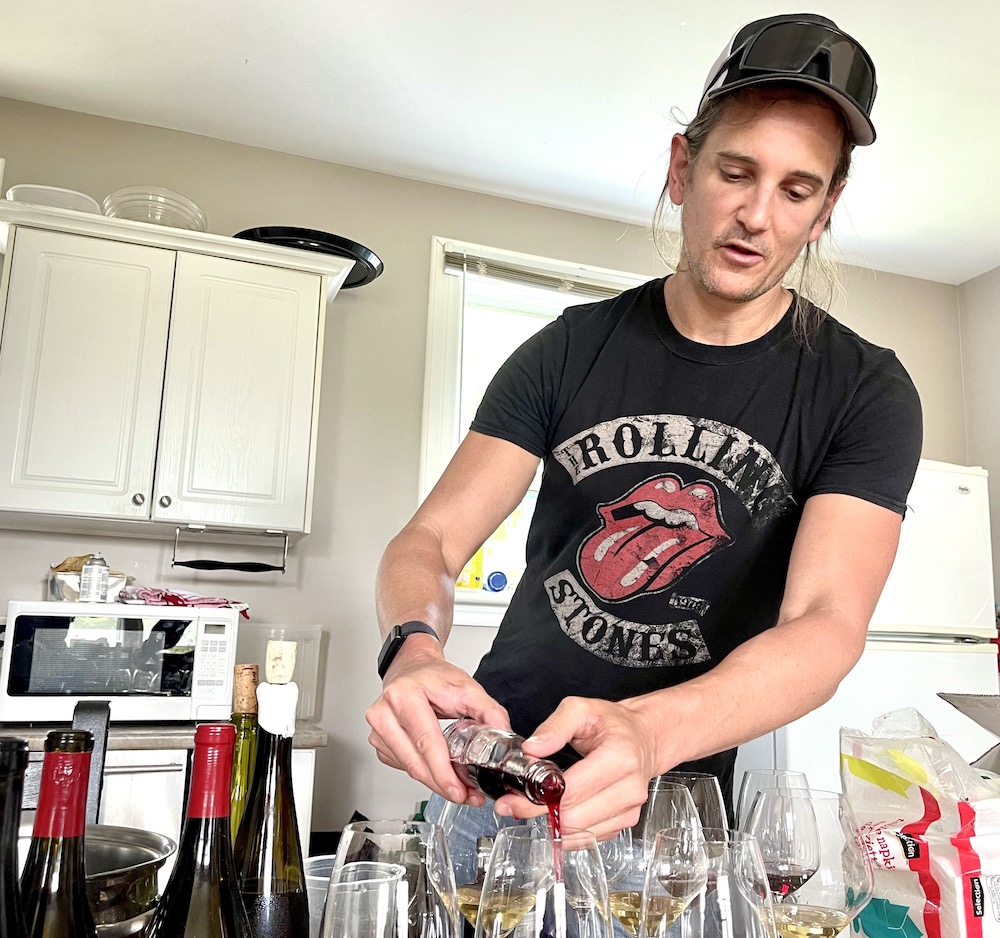
After walking the vineyard in the stifling heat of this relentless summer, I was treated to one of the most fascinating tastings that I can remember. Paul had corralled a wide range of wines from the past and present to show off the vineyard and even some of his own winemaking skills and that of his father. Count me in as impressed. Here’s what we tasted as we sat around the kitchen table in the old farmhouse where the vineyard workers are housed.
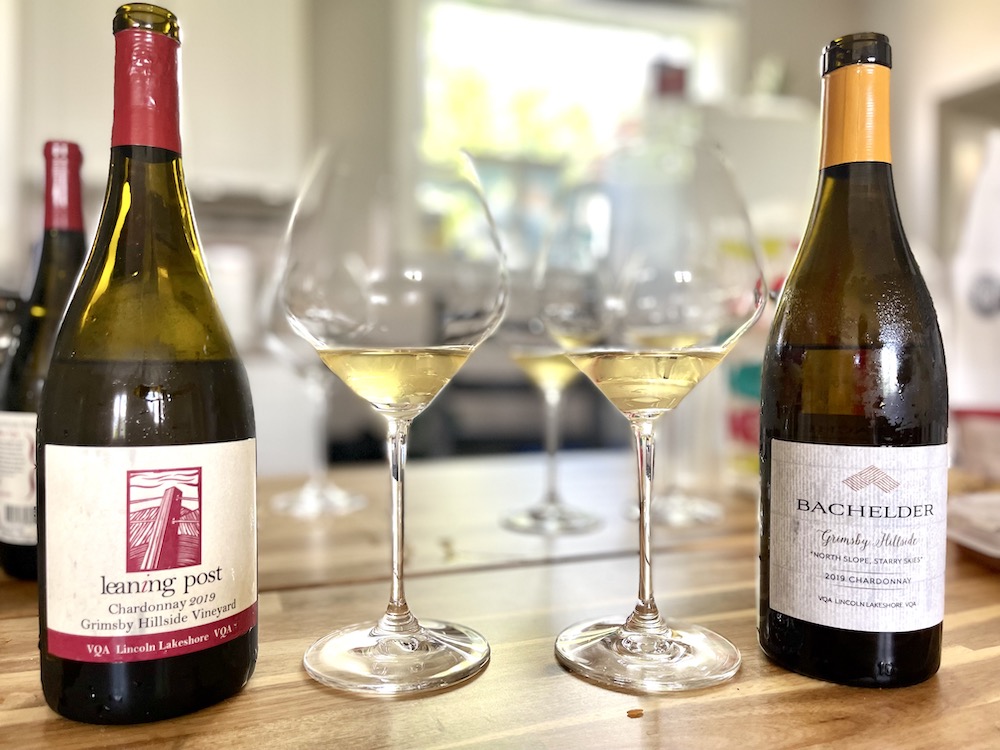
Leaning Post Grimsby Hillside Chardonnay 2019 ($40, 93 points) — This is the first Grimsby Hillside Chardonnay made by Leaning Post, which is only located only 800 metres from Leaning Post. The grapes were whole-cluster pressed and the juice was naturally settled, then racked into barrel where fermentation occurred by indigenous yeast and malolactic bacteria. Once fermentations were completed, the wine remained in French oak barrique and 500-Litre puncheon without stirring of the lees for 15 months. This wine was lightly filtered and bottled. A beautiful saline-rich and fresh nose with pear, lemon curd, flint, bergamot and toasted oak spices. There is a creamy texture on the palate, flinty/stony notes, golden apple, rich pear, and beautifully integrated oak spice notes with electric acidity on the finessed finish.
Bachelder Grimsby Hillside North Slope, Starry Skies Chardonnay 2019 ($45, retasted 94 points) — This has a lovely, perfumed nose of pear, toasted almonds, gorgeous salinity and gunflint, quince, and spice notes. It’s richly concentrated and textured on the palate with apple/pear, toasted nuts, elegant spices, length, and finesse through a long finish. A beautiful wine that can age 5+ years.
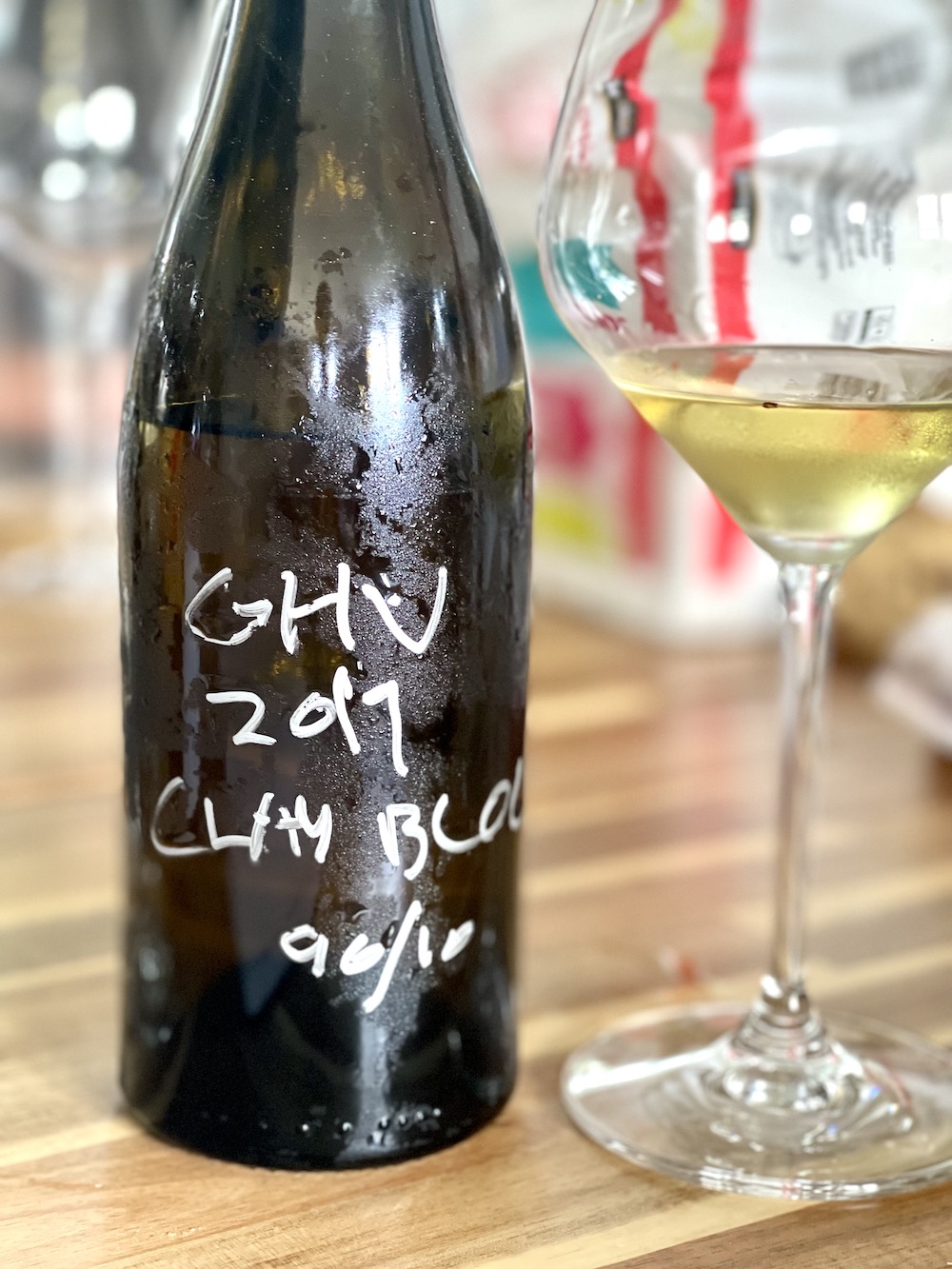
Grimsby Hillside Clay Block Chardonnay 2017 — This is one of the many “true garagistes” wines made by Paul and Frank Franciosa and “friends” as a hobby only for family and friends to enjoy as they do not have a licence (yet) to make wine commercially. They are hoping to one day apply for the licences needed to produce wine under their own label. This is lightly oaked with both American and French oak and has a nose of sweet, spiced oak, ripe pear, yellow apple, and citrus. The oak is more integrated on the palate with a rich and creamy texture, stone fruits, and a fresh finish.
The Franc Factor
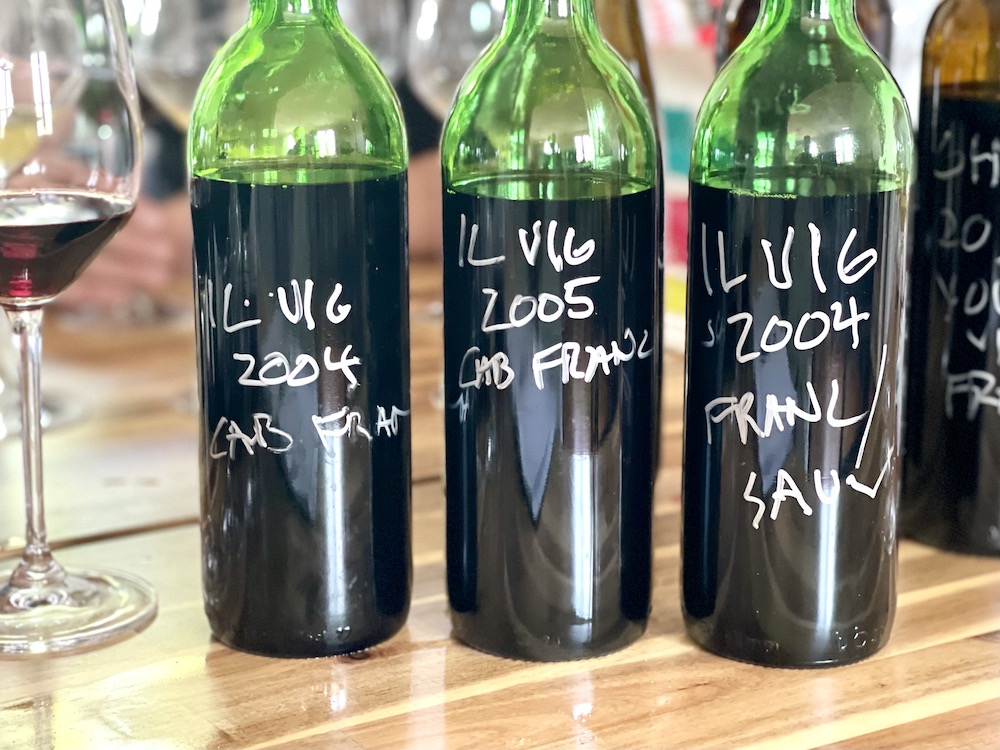
Grimsby Hillside Old Vine Cabernet Franc 2021 (tank samples #1 and #2) — While Chardonnay and Pinot Noir have garnered the most attention at Grimsby Hillside, it’s Cabernet Franc that is the dominant varietal at the estate. With all the new plantings in the ground, CF will account for 70-75 tonnes of the fruit grown there. Chardonnay is second at 40-50 tonnes while Pinot Noir is third at 20-25 tonnes. The Franciosas and “friends” made two old vine (meaning, from the original 2002 planting) Cab Francs. Both showed good colour, lovely aromatics, earthy/savoury notes, black raspberries, dark cherries, cassis, and structure with plenty of zip on the finish.
Grimsby Hillside Cabernet Franc 2020 — The first of the finished Cabernet Francs from the warm 2020 vintage was made by the garagistes team from young vines. It really is a beautiful wine with a pure nose of brambly red berries, concentrated cassis, forest berries and elegant spice. The tannins on the palate offer structure and texture with a finessed finish. While Paul Franciosa admits that “we don’t really know what we are doing, we’ve lost plenty of barrels over the years, but our 2020s are pretty special.” His “old vines” version of the Cabernet Franc is simply stunning, among the tastiest I have tried from 2020 in Niagara, with depth, complexity, rich flavours, and elegant spice due to a defter approach to the oak aging. A really beautiful expression of CF.
Grimsby Hillside Cabernet Franc 2016 — Now, this shocked me. This was the leftover “top up” Cab Franc that was racked right out of the tank into the bottle with no filtering, fining or anything done at all aside from some sulphur at bottling. That we are drinking and enjoying it, speaks for itself.
Il Vigneto Cabernet Franc 2004 and 2005 — This is from the first harvest of the new planting under the original label made by the late Lou Franciosa and Willow Heights winemaker Ron Speranzini. The family discovered six barrels of finished wines in the basement of a house on the property after Lou’s passing and decided to bottle up 100 cases for “friends and family” and are still making their way through the hidden haul. The 2004 version wasn’t bad at all, but showing its age, while the 2005 version was simply incredible with perfectly integrated red fruits, blackberries, lively tannins, tantalizing spice notes and gorgeous tertiary flavours.
The best of the rest (and a shock)
Grimsby Hillside Cabernet Sauvignon 2021 (barrel sample, eight months in oak) — Paul Franciosa is a firm believer in Cab Sauv from the Grimsby Hillside Vineyard. “We think there’s a pretty good future from this varietal from this site,” he said. “For a challenging year I’m happy with how this is turning out.” The wine at this stage is certainly varietally correct in a classic sense with ripe cassis notes, blackberries, anise, and rich oak spices. The racy acidity on the finish will become tamer once in bottle and everything fully integrates.
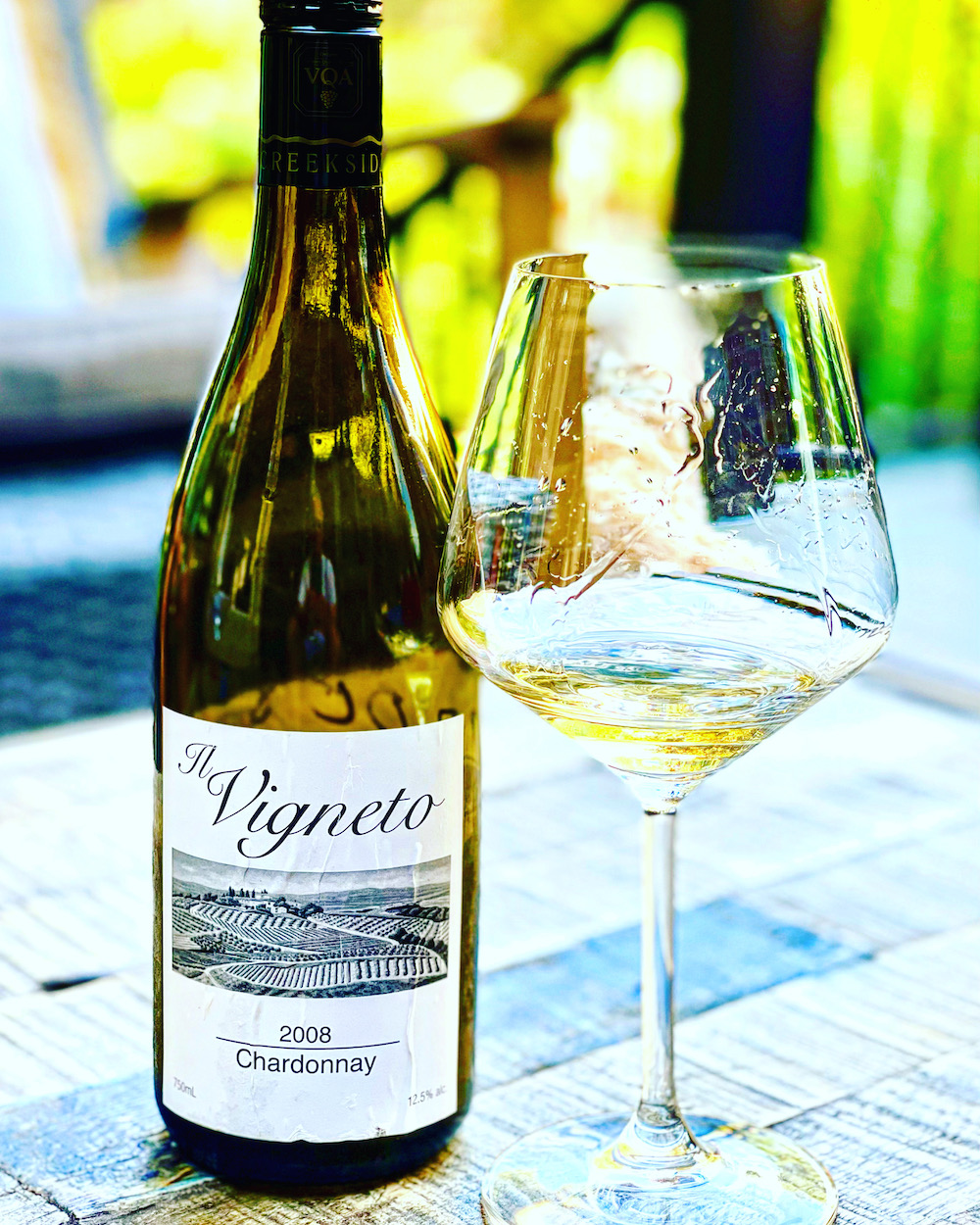
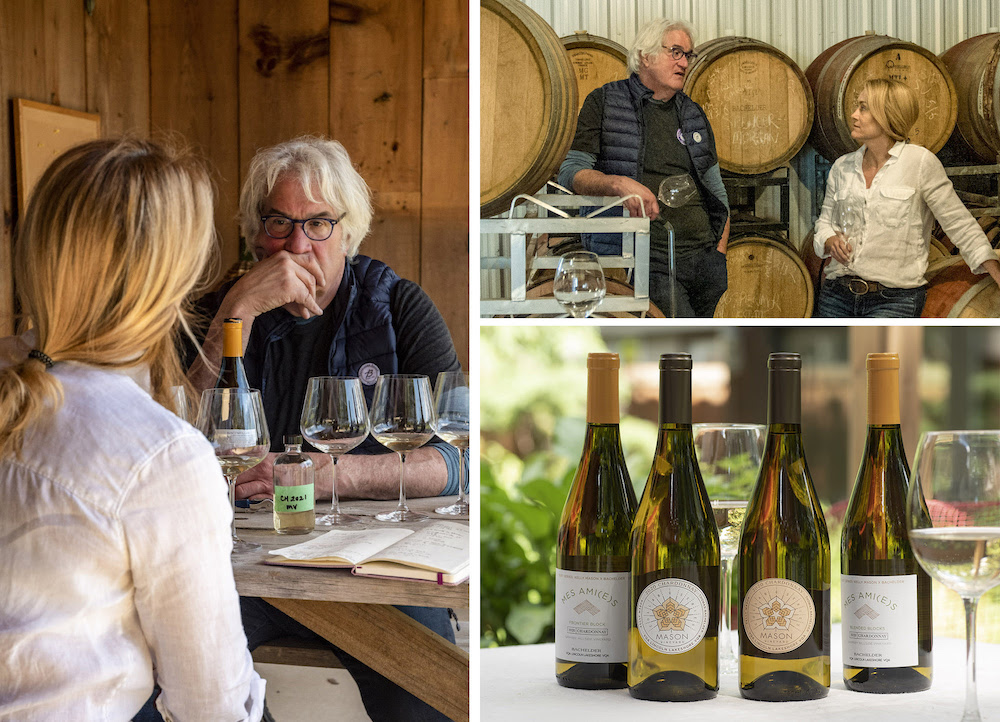
Il Vigneto Chardonnay 2008 — Now, this Chardonnay absolutely took me by surprise. It’s from relatively young vines in what is now called the Frontier Block. No, you can’t buy it. Yes, it’s 2008. It was never for sale. It was made from Grimsby Hillside fruit by Creekside (at the time) winemakers Craig McDonald and Rob Power who were commissioned by the vineyard owners to produce a house wine under the label Il Vigneto using the best block of fruit now bottled by some of the superstars of the Niagara industry. This bottling offers a clear sense of where it has come from and where it’s going with classic Niagara Grapes. This is a coveted block of Chardonnay, and, as noted above, Kelly Mason (Mason Vineyard) and Thomas Bachelder (Bachelder Wines) have a created a collaboration series from this very block from the 2020 vintage (I have the Mason wines in hand and will review in a later post). I am not joking when I say this: It is the among the finest Chardonnay I have ever tasted from Niagara. Period. Full stop. It was stunning; such an enthralling nose of fully integrated stone fruits, wet stone minerality, gun flint and, yes, a touch of reduction, the kind that offers complexity and cerebral interest. It just gets better on the palate with depth of fruit — ripe pear, golden apple, bergamot — and a savoury edge to go with flint, those enticing reductive notes and a lifted, zesty finish. After tasting this wine, and when it came time to end this incredible session, I pleaded with Paul to let me take the rest of the bottle immediately to my friend Peter Rod’s house to taste it and confirm my palate. He has one of the finest palates I know of, certainly in Niagara. When Peter wasn’t home, I called him, and he met me at my house to taste it not 10 minutes later. He, too, was smitten by what he was tasting and corroborated exactly what I thought. A stunner and a complete surprise out of nowhere. Here are his thoughts:
“I remember it being quite fleshy and luscious. Not exactly heavy but excellent concentration and density still with a lovely energy at the core from the stoniness and adequate but not green or sharp acidity. The fruit character was appropriate for Niagara — hard, ripe tree fruit and nothing tropical or sweet. I really, really liked it.”
It is a glimpse into what many of Niagara’s top winemakers who source their grapes from Grimsby Hillside will find as their young wines develop some age. And that future looks very bright indeed.
A sampling of previously reviewed Grimsby Hillside wines:
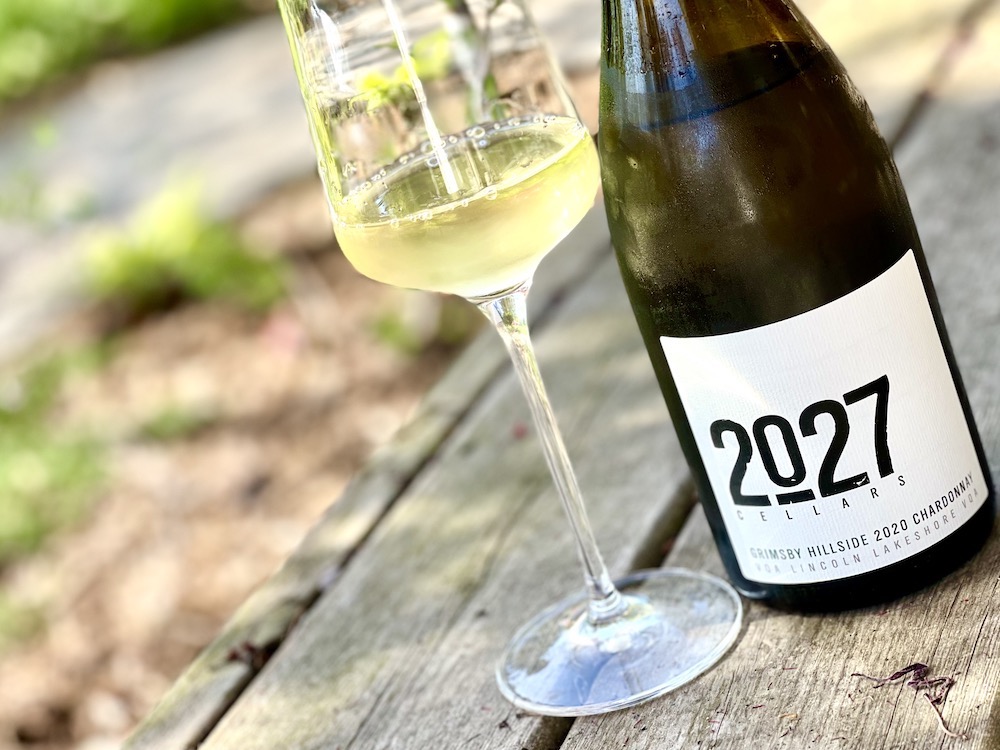
2027 Cellars Grimsby-Hillside Chardonnay 2020 ($40, 94 points) — This Lincoln-Lakeshore sub-appellation, where winemaker/owner Kevin Panagapka sources this Chardonnay, is gaining quite the reputation for its terroir-driven wines, with 2027, Thomas Bachelder and Leaning Post (among others) all crafting stellar Chards from this vineyard. “I think it’s got some amazing potential,” says Panagapka. The fruit for the 2027 version is hand harvested, whole cluster pressed, wild fermented (but no malo) and aged for 18 months in 20% new Burgundian oak. It’s tightly wound right now, but let it breathe and notes of fresh pear, saline/flinty minerality, apple skin, bergamot, and a lovely, balanced approach to the oak spice accents emerge. It opens up on the palate and shows some weight with richer pear, yellow apple, toasted almonds, vanilla bean and spice, flinty/stony notes and pure elegance and finesse on the lifted and long finish. Such a beautiful expression of Niagara Chardonnay, but please give it some time. Can cellar 5+ years.
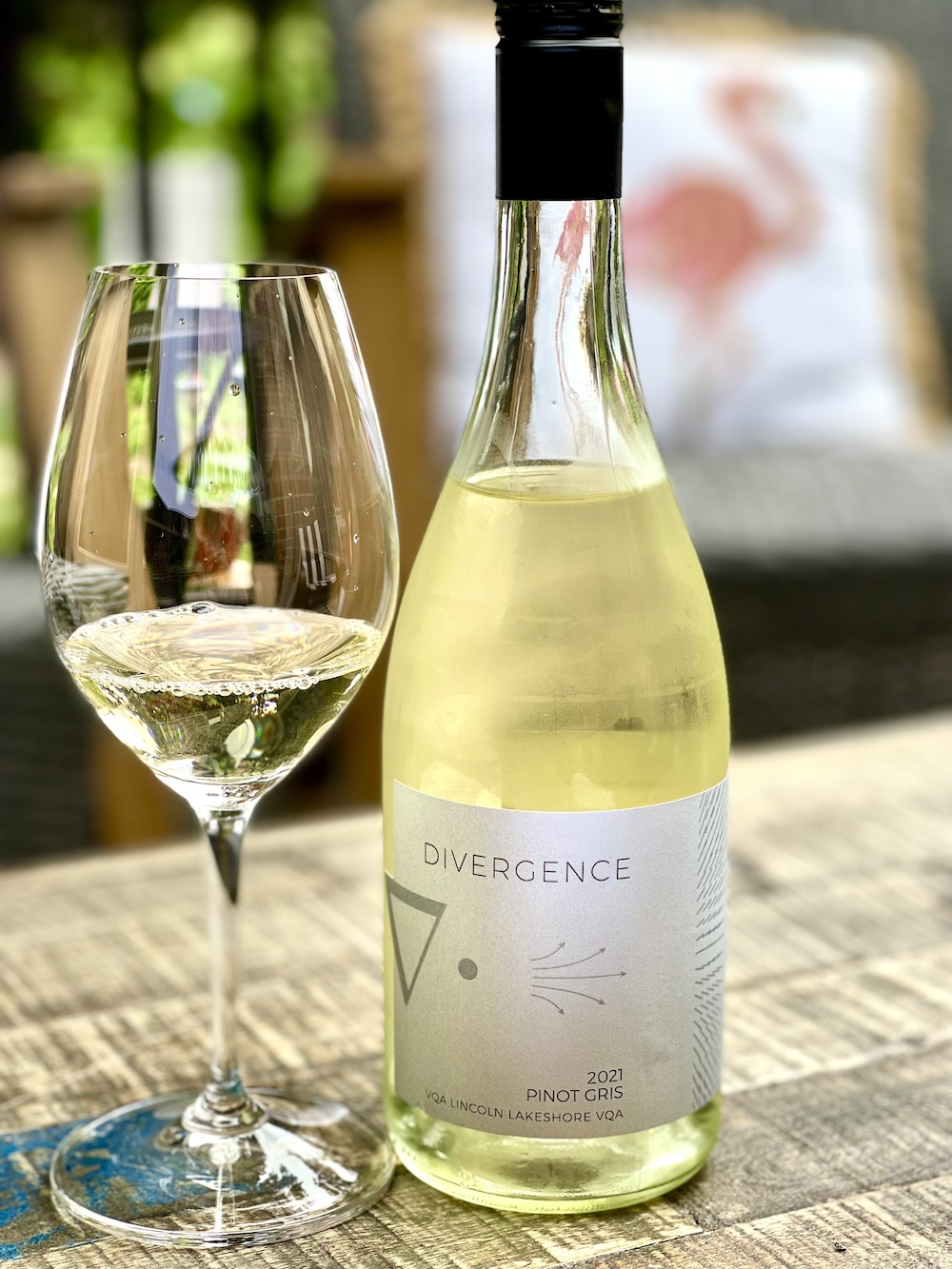
Divergence Pinot Gris 2021 ($25, 90 points) — The fruit was sourced from the Grimsby Hillside Vineyard in the Lincoln-Lakeshore sub-app. Following fermentation, the wine was racked once and allowed to age on fine lees for an additional four months. It has a vivid nose of summer peach, melon, green apple, grapefruit, and a lovely saline quality. It’s ripe and loaded with stone fruits, melon, a creamy/leesy texture and a bright, fresh finish.
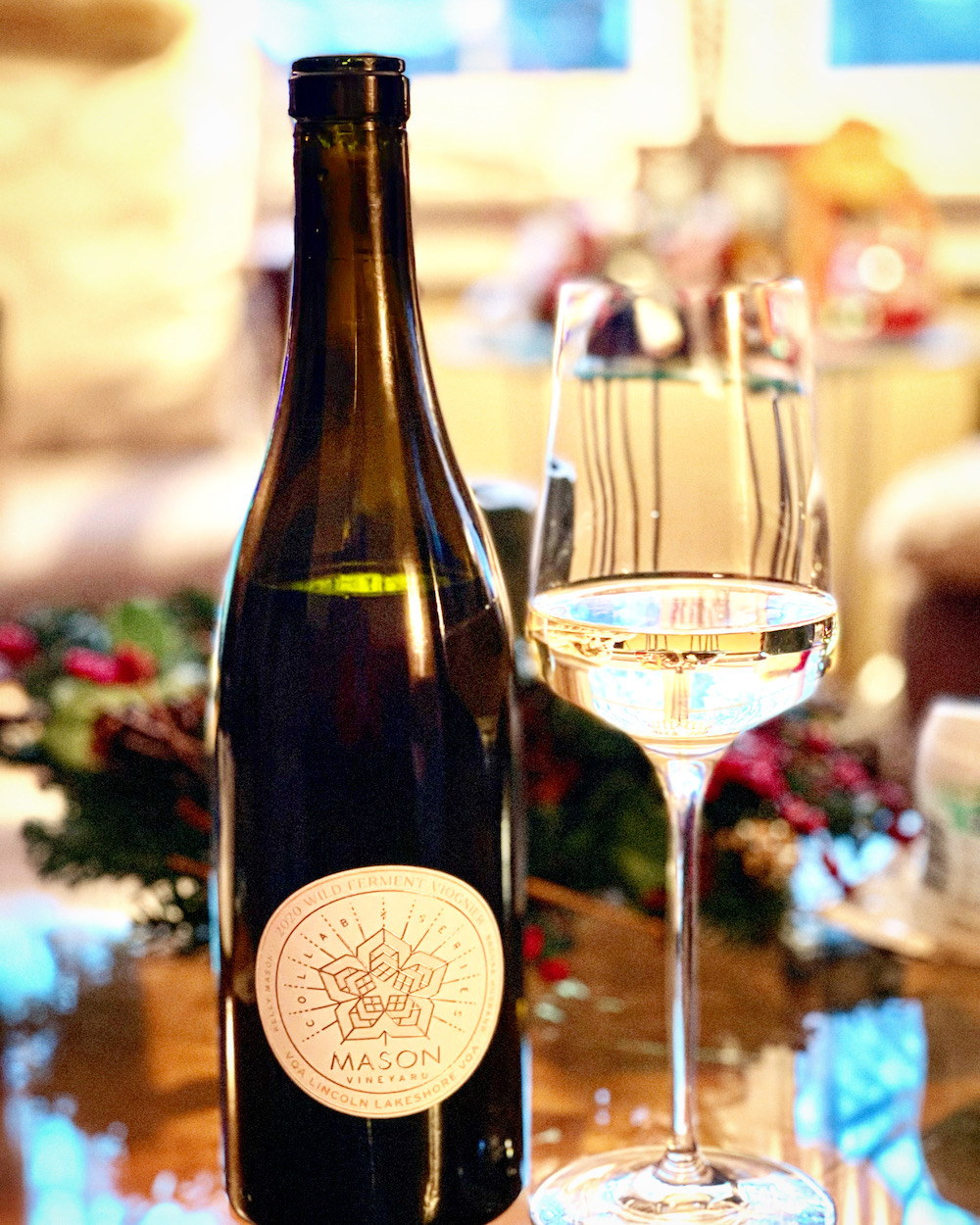
Mason Vineyard Wild Ferment Viognier 2020 ($27, 91 points) — The Viognier for this second wine in the “Collab Series” is sourced from the Grimsby Hillside Vineyard in the Lincoln Lakeshore sub-appellation. This vineyard is one of the oldest in Niagara — the first harvest of grapes from the site was in 1874. The vineyard is 90-acres and is mainly planted to Cabernet Franc, Chardonnay, Pinot Gris, Riesling, and Pinot Noir. The soil is predominantly clay and silty clay/loam over calcareous red clay subsoils. The vineyard is farmed without reliance on chemical herbicides and adopts other sustainable land stewardship practices including undertaking biodiversity plantings and habitat restoration. As Mason explains, “We have never made Viognier before. We like drinking it and thought this was a great opportunity to make a small batch and try something new. Friends and family came out to help us pick the grapes and help with the hand sort. We fermented in stainless for the first half of primary fermentation and in neutral oak for the second half. To go along with our ‘hands on winemaking approach’ we decided to hand bottle all 370 bottles. Why you ask? Because we are suckers for punishment. And to further our learning in making Viognier we’ve decided to hold back one more barrel to see how a year of aging (impacts) the wine. So, look out for Part 2, which should be released sometime in 2022.” The Vio was wild fermented and aged in a combination of stainless steel and neutral French oak. It is finished with the highest amount of residual sugar — 2.5 g/l — in the portfolio, which is still super dry. It’s highly aromatic with profound apricot, honeydew melon, ripe peach, white flowers, ginger, grapefruit, and apple. It has a fleshy/oily texture and an enticing broth of exotic tropical fruits, apricot tart, a ginger/nutmeg/spice thing going on, with depth, complexity that all lead to a luxurious and juicy finish. I, for one, am looking forward to Part 2 of this delicious wine.





A treasure in our community that will become a beacon of success.